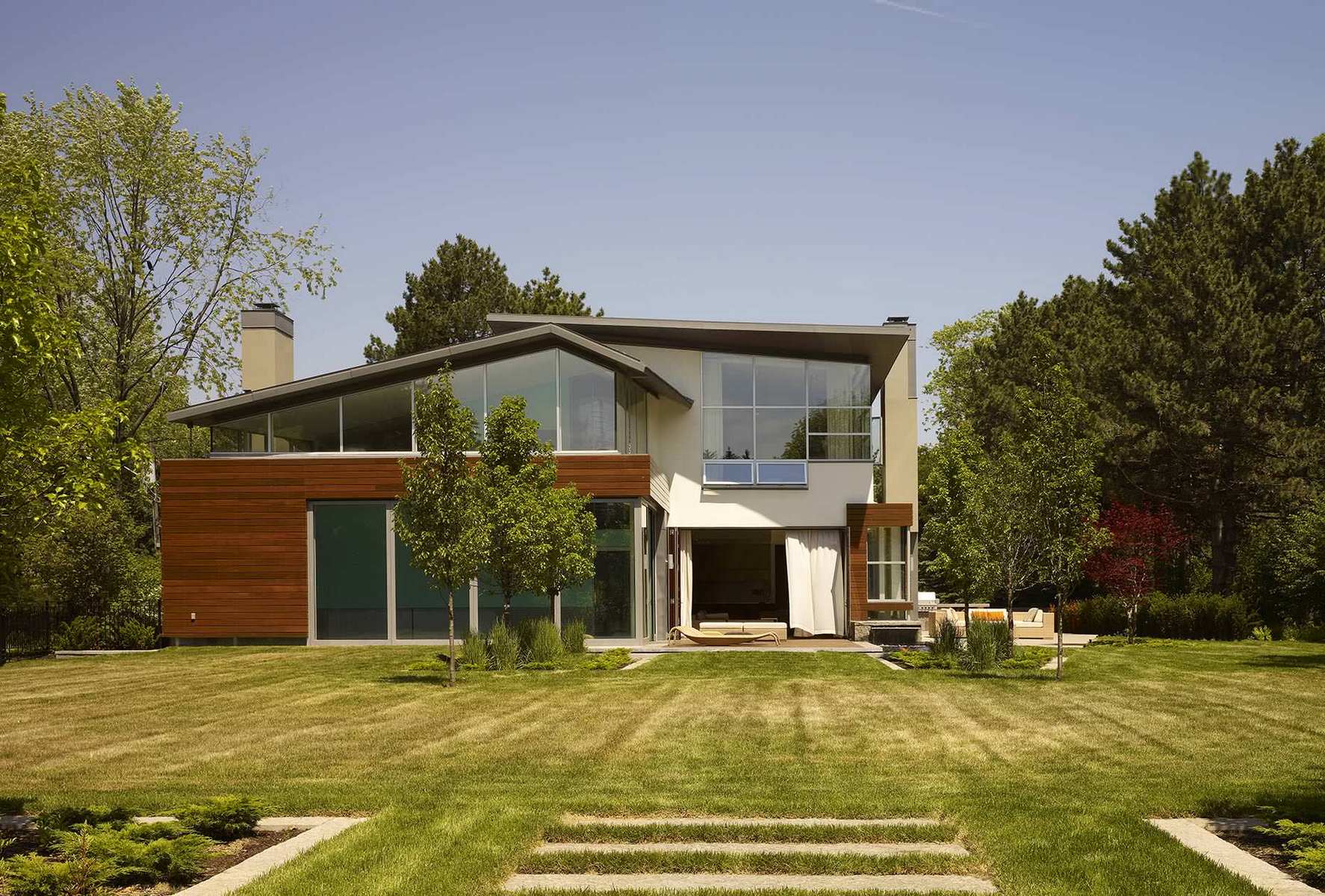#8586. Modern Country Facade: Contrasting Materials and Nature Integration
This modern country house exemplifies architectural modernism with minimalist elements. The facade organization follows the principle of contrasting materials and volumes. The main structure features light-colored stucco that effectively complements warm wooden panels, creating accent inserts across the facade.
The architectural composition plays with geometric forms – an asymmetrical gabled roof with wide overhangs adds dynamism to the silhouette. Particularly expressive is the second floor with panoramic glazing spanning almost the entire front, providing abundant natural light to interior spaces and establishing a visual connection with the surrounding landscape.
The facade features a thoughtful rhythm – vertical wooden panels contrast with horizontal glazing lines. This technique creates visual balance and emphasizes the contemporary character of the building. An important detail is the minimalist chimney, which harmoniously integrates into the overall composition without disrupting its integrity.
The facade organization demonstrates a desire to integrate architecture with the natural environment – large open terraces transitioning into a manicured lawn create a smooth flow between interior and exterior spaces. Young trees planted in front of the house will eventually become a natural extension of the overall composition.
When designing your own facade, several techniques from this example are worth adopting: contrasting material combinations (stucco/wood/glass), large-format glazing to maximize site views, playing with roof geometry to create an expressive silhouette, and using natural materials for harmonious integration with the natural surroundings.
